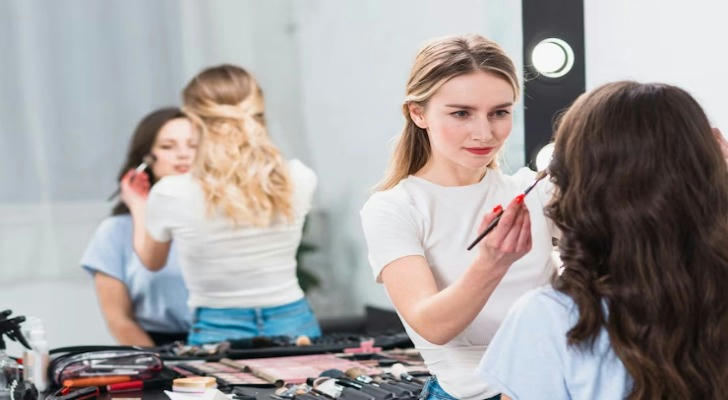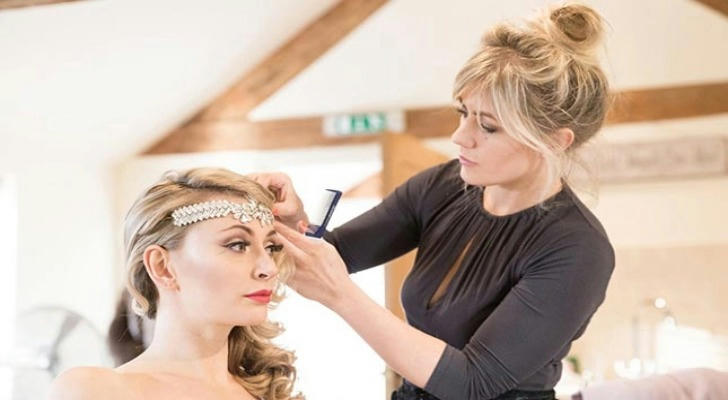From a beauty lover to a professional makeup artist, you need to go through these steps
Many people started to love makeup from their first lipstick. Gradually, they learned more and more about makeup, such as foundation, contouring, eye makeup, and false eyelashes, until someone said, "You are so professional at makeup, have you considered becoming a makeup artist?" If you have ever been tempted to turn your hobby into a career, then this article will draw a clear transformation path for you. From starting with interest to becoming a real professional makeup artist, what are the key steps in the process? Let's make it clear step by step 💼🎨

Ⅰ. Clear goals: What kind of makeup artist do you want to be? 🎯
"Makeup artist" is not a single profession, it actually has a wide range of directions:
- 👰♀️ Bridal stylist: Good at creating romantic and lasting wedding makeup
- 📸 Fashion photography makeup artist: Provide creative styling for magazines, advertisements, and model shoots.
- 🎬 Film and television special effects makeup artist: Participate in movies or stage plays to create character special effects or period makeup.
- 🧑🏫 Teaching makeup artist: Share makeup knowledge through courses and online platforms.
Different directions require different techniques, styles, and communication skills. The first step is to recognize the areas you are most interested in and prepare for them.
Ⅱ. Lay a solid foundation: technology + knowledge 💡💄
If you want to become a professional makeup artist, you can't skip the basics. The following are three essential abilities in the entry stage:
1️⃣ Understanding of makeup structure 🧠
Understand the proportions of facial features and facial contours, and learn to "adapt to the face". The same eyeshadow technique may produce completely different effects for different eye shapes.
2️⃣ Tools and products mastery 🛠
Brush types, sponge usage, base makeup selection for different skin types, product layering order... all need to be mastered in order to be able to handle different customers with ease.
3️⃣ Color matching aesthetics 🎨
Understand the principles of warm and cold tones, complementary colors, light and dark contrast, etc., to make the makeup more coordinated and layered, and improve professionalism.
At this stage, many people will choose to study systematically, or practice with experienced instructors, or they can establish a daily training plan by themselves.
Ⅲ. Practical training: practice is the way 💪📸
The growth of makeup artists is inseparable from a lot of practical experience. The following ways can help you improve quickly:
👭 Practice makeup for friends
This is the first step for many makeup artists. Not only can you try different skin types and facial features, but you can also improve communication skills and adapt to diverse needs.
📷 Build a portfolio
Keep a record of every makeup session, even if it's just a photo with your phone. Organize it into an electronic file or social media portfolio, which will be very useful when looking for a job or taking orders in the future.
🎭 Simulate work scenarios
Providing voluntary makeup for friends' weddings, events, and performances is a good way to accumulate experience. Understand the ability to maintain stability under pressure.
IV. Obtaining a license: an important step in legal employment 📋🖊
In the United States, most states require makeup artists to hold a professional license to legally provide services. Usually, this means you need to complete:
- A certain number of hours of professional training
- Written and practical exams
- Courses related to hygiene regulations and customer management
Each state has slightly different regulations. It is recommended to check the makeup artist license requirements in your area in advance. Having a license not only increases your professional credibility, but also opens up more career paths for you.
Ⅴ. Expand your network and build your brand 🌐✨
Makeup artists are not only skilled workers, but also a profession that relies heavily on "personal style and reputation".

📲 Manage social media
Instagram, TikTok, and YouTube are all great platforms for displaying makeup skills. Continuously posting content and building a personal style can attract customers and even brand cooperation.
👥 Participate in industry events
Beauty exhibitions, styling competitions, and course lectures are all good opportunities to establish connections with peers. Sometimes, a small event brings about a cooperation opportunity that can completely change the trajectory of a career.
Ⅵ. Case sharing: The growth path from an enthusiast to a wedding stylist 👰🌸
Character introduction: Samantha, 34 years old, formerly an administrative assistant
Samantha initially just loved to make up her bestie, and later opened a small account to share her makeup, which gradually attracted some attention. She realized that she was passionate about this job, so she signed up for professional courses, practiced after get off work in the evening, and did makeup for friends' weddings on weekends.
A year later, she successfully obtained a license and opened her own wedding makeup service. She said: "At first I just liked to paint faces, but I didn't expect that I could make a living from it and meet so many new people. When I saw the satisfied smile of the bride, I knew I was on the right path."
Ⅶ. Becoming a professional makeup artist is a journey of persistence and love 🌈💼
From a beauty lover to a professional makeup artist, it sounds dreamy, but the process is not easy. It requires you to practice, learn, break through, and accumulate experience. But it is these processes that make every makeup artist exude unique charm.
You don't need to become famous overnight, nor do you have to get it all in one step. As long as you keep going, there will always be someone who sees your light.
